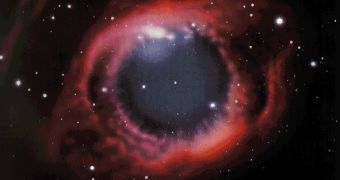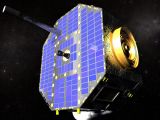The IBEX probe will be launched on Sunday with the declared aim of reaching past the Earth's magnetic field in order to examine the interactions that take place at the boundaries of the heliosphere.
Despite having protruded far more distant corners of the universe, we still have little knowledge of the phenomena that occur at the edge of our solar system, where Sun's influence fades and the interstellar radiations are at large. There is a process that we know to happen, though, which will help scientists gather some data without having to reach that far into space (8-9 billion miles or 12.9-14.5 billion km away from the Earth). This refers to the particles that are stripped of electrical charge while crossing the borders of the heliosphere (the Sun's windy bubble that envelops our solar system and separates it from the outer space). When an atom from interstellar regions passes by a positively-charged particle emitted by the Sun, an electron can pass to the other, neutralizing the charging of the atom.
This process may be exploited by the recently built IBEX probe (Interstellar Boundary Explorer), which was designed to be able to detect such charge-stripped particles. If it is placed outside the influence of the magnetic field of the Earth, it could depict the discharged atoms formed in the process of the solar system's travel through space. These are believed to be similar to the ones forming at the outer edges of the heliopause (where Sun's bubble ends). As IBEX lead scientist David McComas, from the Southwest Research Institute in Texas stated in an interview for the Discovery News, “It was this concept of having a new measuring system that created a way to look at things at a distance”.
The $169 million probe will be launched Sunday from the Marshall Islands-based Kwajalein Atoll in the Pacific Ocean, which is closer to the Equator and will shorten the spacecraft's travel by taking advantage of the Earth's spinning. Two thirds of the craft's weight of 1.000 pounds (453 kg) are represented by fuel, which will allow it to travel as far as to the moon. It was provided with a cheap Pegasus booster for launching purposes. Scientists expect to observe things that they will not be fully able to comprehend, since the particle interaction process may have suffered changes in time. The only probes that passed beyond the heliosphere's boundaries were the two Voyager missions, the first in 2004 and the second in 2007, more than 30 years after their launch.

 14 DAY TRIAL //
14 DAY TRIAL // 
